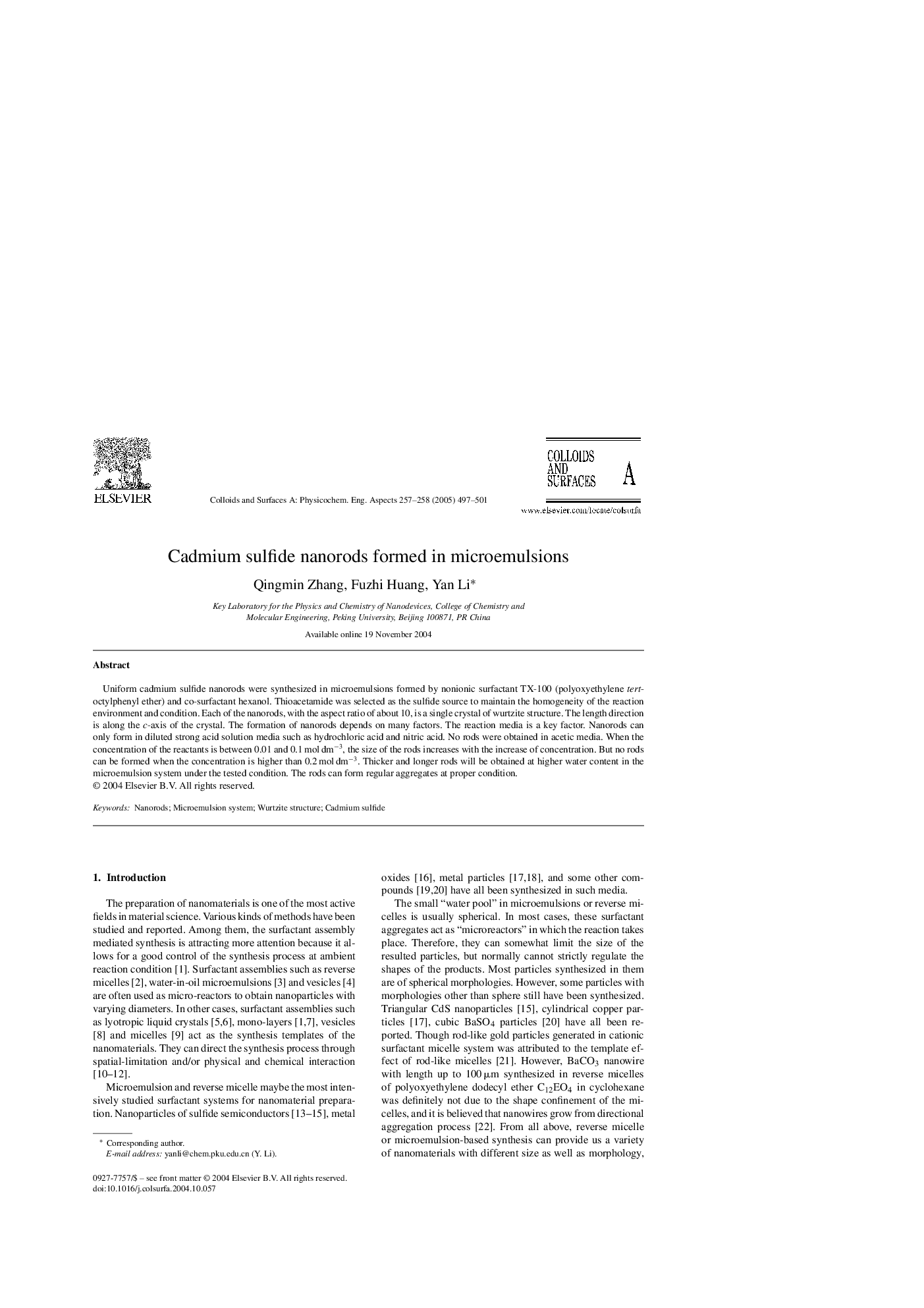| Article ID | Journal | Published Year | Pages | File Type |
|---|---|---|---|---|
| 9676019 | Colloids and Surfaces A: Physicochemical and Engineering Aspects | 2005 | 5 Pages |
Abstract
Uniform cadmium sulfide nanorods were synthesized in microemulsions formed by nonionic surfactant TX-100 (polyoxyethylene tert-octylphenyl ether) and co-surfactant hexanol. Thioacetamide was selected as the sulfide source to maintain the homogeneity of the reaction environment and condition. Each of the nanorods, with the aspect ratio of about 10, is a single crystal of wurtzite structure. The length direction is along the c-axis of the crystal. The formation of nanorods depends on many factors. The reaction media is a key factor. Nanorods can only form in diluted strong acid solution media such as hydrochloric acid and nitric acid. No rods were obtained in acetic media. When the concentration of the reactants is between 0.01 and 0.1 mol dmâ3, the size of the rods increases with the increase of concentration. But no rods can be formed when the concentration is higher than 0.2 mol dmâ3. Thicker and longer rods will be obtained at higher water content in the microemulsion system under the tested condition. The rods can form regular aggregates at proper condition.
Related Topics
Physical Sciences and Engineering
Chemical Engineering
Colloid and Surface Chemistry
Authors
Qingmin Zhang, Fuzhi Huang, Yan Li,
